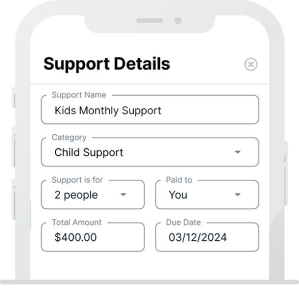Understanding Montana Child Support: Your Essential Guide
Understanding Montana child support ensures you can effectively contribute to your child’s wellbeing. This guide explains how to calculate payments, modify orders, and ensure compliance so you can navigate the system with confidence.
Key Takeaways
Montana’s child support system enforces both parents’ financial contributions to ensure children’s needs are met post-separation or divorce.
Child support payments are determined by each parent’s income, parenting time, and specific deductions, ensuring a fair distribution of financial responsibilities.
The Montana Child Support Enforcement Division utilizes various enforcement measures, such as wage garnishment and tax refund interception, to ensure compliance with child support orders.
Overview of Child Support in Montana
Child support laws in Montana are designed to ensure that both parents contribute financially to their child’s upbringing. These laws are crucial in maintaining the living standards of children after their parents separate or divorce. The Montana Department of Public Health and Human Services oversees child support enforcement, guiding parents on their obligations and ensuring compliance.
The Child Support Enforcement Division (CSED) plays a pivotal role in this system. It provides guidelines that offer a fair and consistent approach to calculating support payments, ensuring that all children receive adequate financial support. The division also helps collect and distribute child support payments, streamlining the process for parents.
Ultimately, child support in Montana aims to ensure that children’s needs are met, irrespective of their parents’ relationship status. Applying these guidelines consistently creates a stable environment crucial for children’s growth and development.
Determining Child Support Payments
Determining child support payments in Montana involves a detailed process that considers both parents’ incomes and the child’s needs. The state uses specific guidelines to establish a monthly amount that adequately supports the child’s living expenses. This method guarantees a fair distribution of financial responsibilities between parents.
One of the key factors influencing child support payments is the amount of parenting time each parent has. For joint custody arrangements, the support amounts can decrease if the nonresidential parent spends more than 110 days per year with the child. Additionally, adjustments can be made for personal allowances and other factors, reflecting each parent’s unique financial situation.
The proportionate share of the combined incomes determines each parent’s share of the child support obligation. This means the obligation is based on how much each parent earns relative to the total income. This method ensures that the support amount is fair and reflective of both parents’ ability to pay. Deductions for items like health insurance premiums and childcare costs can further adjust a parent’s reported income, ensuring an accurate calculation.
Montana provides various resources to assist parents in calculating child support. Worksheets and detailed instructions are available online, and a family law attorney can provide additional guidance if needed. Familiarity with these guidelines helps parents accurately determine their obligations and avoid confusion.
What Counts as Income for Child Support?
In Montana, determining what counts as income for child support is a crucial step in calculating the right amount.
The state’s guidelines define a parent’s total income to include various economic benefits such as:
wages
tips
retirement benefits
bonuses
commissions
rental income
investment income
This comprehensive approach ensures that all potential income sources are considered, providing a fair basis for calculating pay support payments.
Income sources vary widely, including wages, pensions, unemployment benefits, and alimony. Including these forms of income ensures the child support amount reflects each parent’s full financial capacity, providing fair and sufficient support for the child.
Exclusions from Income Calculations
Not all income sources are considered when calculating child support in Montana. For instance, a new spouse’s income is excluded from these calculations, ensuring that the financial responsibility remains solely on the child’s biological or adoptive parents. Excluding a new spouse’s income ensures a fair assessment of each parent’s financial responsibility.
Deductions Allowed in Child Support Calculations
Montana allows specific deductions from income when calculating child support obligations. These deductions can include mandatory alimony payments, certain taxes, and extraordinary unreimbursed medical expenses. Allowing these deductions ensures the support amount accurately reflects the parent’s financial capacity.
Unlike federal tax deductions, the deductions for child support calculations in Montana are specifically tailored to the state’s guidelines and do not always align with federal rules. Understanding this distinction is crucial for accurately assessing income for child support.
Modifying Child Support Orders

Life circumstances can change, and when they do, it may be necessary to modify child support orders. In Montana, parents seeking a modification must complete a Child Support Modification Form and provide supporting documentation. This process ensures that any changes in financial circumstances or the child’s needs are adequately reflected in the support payments.
Modifications can be justified by significant change in income, healthcare needs, custody arrangements, or the child reaching certain milestones. When reviewing these requests, Montana judges assess the overall circumstances, including the needs of both parents and any changes in the child’s requirements. This thorough judicial review process helps ensure that modifications are fair and justified.
Supporting documentation, including proof of income and expenses, is essential for these modifications. Courts require this evidence to justify any deviations from standard child support guidelines, ensuring that the modified amount is appropriate and fair.
Enforcement of Child Support Orders
Enforcing child support orders is vital for ensuring children receive necessary financial support. The Montana Child Support Enforcement Division (CSED) plays a vital role in this process, utilizing various methods to ensure compliance.
One effective enforcement tool is wage garnishment, where employers are required to deduct owed amounts directly from the non-compliant parent’s paycheck. Additionally, the state can intercept tax refunds from parents who are behind on child support, redirecting these funds to the custodial parent. These measures help ensure that child support payments are made consistently and on time.
Additional enforcement actions include suspending professional and recreational licenses for non-compliant parents. In extreme cases, passport denial can be used as a measure to enforce financial responsibilities. These stringent enforcement mechanisms underscore the importance of meeting child support obligations and the serious consequences of failing to do so.
Special Circumstances Impacting Child Support
Certain special circumstances can impact child support calculations in Montana. For instance, a parent’s remarriage does not automatically qualify for a change in child support amounts. However, judges can consider the needs of both parents and the children, as well as any changes in the child’s requirements when evaluating such cases.
Adjustments in parenting time can also impact child support payments. Nonresidential parents who have significant parenting time can see reductions in their support payments. However, in sole custody cases, there is no parenting time credit.
Parents must provide evidence to justify deviations from standard guidelines if the amount is deemed unfair or inappropriate.
Ending Child Support Obligations
In Montana, child support obligations generally end when the child turns 18 or graduates high school, whichever occurs later, but this must not extend beyond the age of 19. However, for children with disabilities that lead to financial dependence, child support obligations may continue indefinitely unless a judge determines otherwise.
Extended obligations ensure ongoing support for children with special needs, reflecting the state’s commitment to their well-being. Knowing when child support ends helps parents better plan their financial responsibilities.
Applying for Child Support Services

Parents in Montana can apply for child support services through their divorce papers or by enrolling for services through the Child Support Services Division (CSSD). The application process is user-friendly, with online options available for convenience. CSSD plays a crucial role in helping parents collect and enforce existing child support orders.
For those needing assistance, the CSSD can contact at 1-800-346-5437. This support includes financial collections, medical support, and other necessary services to ensure the child’s well-being. Engaging with the CSSD can make managing child support obligations more straightforward and less stressful.
Resources for Parents
Montana provides several resources to help parents navigate the child support system. The CSSD website offers a wealth of online resources and information for applying for child support services. Parents can also find court order forms and guidelines on the Montana Judicial Branch website, making it easier to understand and comply with legal requirements.
Additionally, the LIFTS Resource Guide provides various supports for families, including options related to child support. These resources are invaluable for parents seeking to ensure that their child’s needs are met effectively and efficiently.
Summary
Navigating the child support system in Montana can be complex, but understanding the key aspects can make it more manageable. From determining payments and calculating income to modifying orders and enforcing compliance, this guide has covered essential information to help you fulfill your obligations. By leveraging available resources and understanding your rights and responsibilities, you can ensure your child’s needs are met, providing them with a stable and supportive environment.
Frequently Asked Questions
How is child support calculated in Montana?
Child support in Montana is determined by assessing both parents' incomes and the needs of the child, following established state guidelines. Therefore, the calculation focuses on ensuring the child's financial requirements are adequately met.
Can child support orders be modified?
Yes, child support orders can be modified in Montana if there are significant changes in income, healthcare needs, custody arrangements, or the child's age.
What happens if a parent fails to pay child support?
If a parent fails to pay child support, the Child Support Enforcement Division can take actions such as wage garnishment, interception of tax refunds, and suspension of licenses to enforce compliance. It's crucial for parents to understand the serious consequences of non-payment.
When do child support obligations end in Montana?
Child support obligations in Montana typically end when the child turns 18 or graduates high school, whichever happens later, but no later than age 19. In cases of disabled children, support may continue indefinitely.
How can parents apply for child support services in Montana?
Parents in Montana can apply for child support services by submitting divorce papers or enrolling with the Child Support Services Division, with online applications and assistance readily accessible.
Montana Child Support Resources
- Montana Child Support Information
- Make A Payment
- Montana Child Support Forms
- Montana Child Support Guidelines
- Monatan Child Support Calculator
- Montana Child Support FAQs
- Montana Child Support Contact Information
- Montana Department of Health and Human Services
- Montana Child Support Enforcement
- Montana Child Support Healthcare Reimbursement
Montana Child Support Services Contact Information
Child Support, Department of Public Health & Human Services
3075 N. Montana Avenue Suite 112
Helena, Montana 59620
Office: (406) 444-9855
Fax: (406) 444-1370
Blackfeet Nation
Director
Blackfeet Manpower One Stop Center
PO Box 1090
Browning, Montana 59417
Office: (406) 338-3822
Fax: (406) 338-5400
Email: george_kipp@yahoo.com
Chippewa Cree Tribe
IV-D Director
Child Enforcement Project
RR1 PO Box 544
Box Elder, Montana 59521
Office: (406) 395-4176
Fax: (406) 395-4956
Email: brianm@cctcsp.org
Confederated Tribes of Salish and Kootenai
Project Manager
PO Box 278
Pablo, Montana 59855
Office: (406) 675-2700 x. 1234
Fax: (406) 675-2775
Email: hankc@cskt.org
Fort Belknap Indian Community
Director
Fort Belknap Indian Community Child Support Office
656 Agency Main Street
Harlem, Montana 59526
Office: (406) 353-4230
Fax: (406) 353-4216
Email: sishorn@ftbelknap.org

